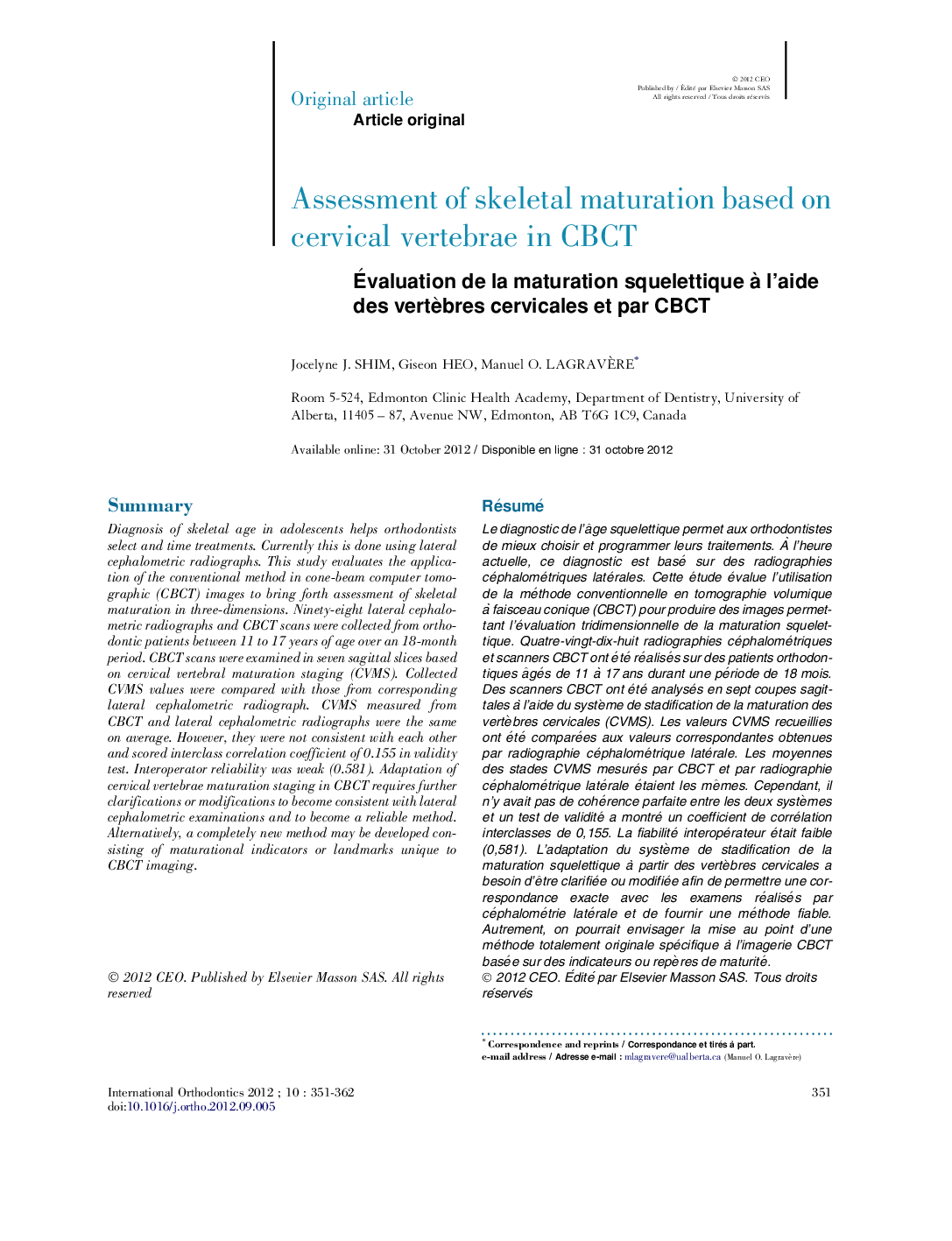| Article ID | Journal | Published Year | Pages | File Type |
|---|---|---|---|---|
| 3135807 | International Orthodontics | 2012 | 12 Pages |
Abstract
Diagnosis of skeletal age in adolescents helps orthodontists select and time treatments. Currently this is done using lateral cephalometric radiographs. This study evaluates the application of the conventional method in cone-beam computer tomographic (CBCT) images to bring forth assessment of skeletal maturation in three-dimensions. Ninety-eight lateral cephalometric radiographs and CBCT scans were collected from orthodontic patients between 11 to 17 years of age over an 18-month period. CBCT scans were examined in seven sagittal slices based on cervical vertebral maturation staging (CVMS). Collected CVMS values were compared with those from corresponding lateral cephalometric radiograph. CVMS measured from CBCT and lateral cephalometric radiographs were the same on average. However, they were not consistent with each other and scored interclass correlation coefficient of 0.155 in validity test. Interoperator reliability was weak (0.581). Adaptation of cervical vertebrae maturation staging in CBCT requires further clarifications or modifications to become consistent with lateral cephalometric examinations and to become a reliable method. Alternatively, a completely new method may be developed consisting of maturational indicators or landmarks unique to CBCT imaging.
Related Topics
Health Sciences
Medicine and Dentistry
Dentistry, Oral Surgery and Medicine
Authors
Jocelyne J. Shim, Giseon Heo, Manuel O. Lagravère,
